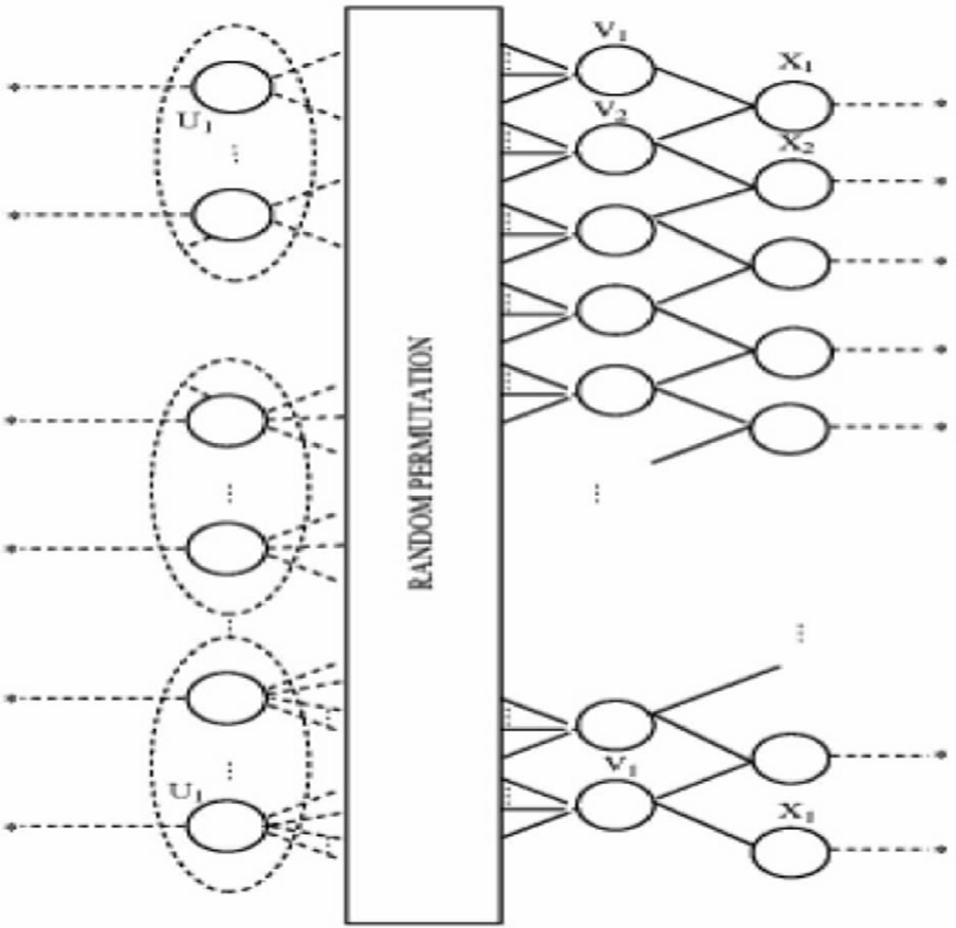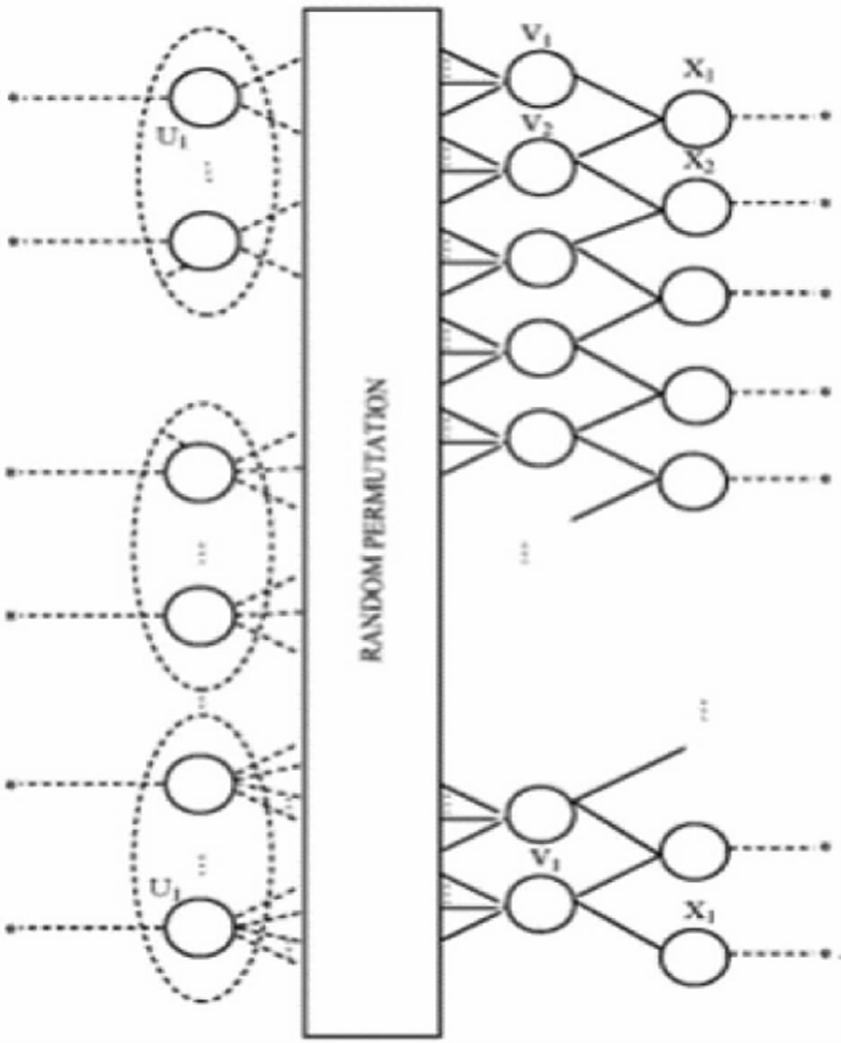Inter Partes Review Estoppel Applies to All Arguments Put Forward Against Challenged Claims
In California Institute of Technology v. Broadcom Limited,1 the Federal Circuit overruled prior precedent and clarified that inter partes review (IPR) estoppel applies not just to claims and grounds asserted in the petition and instituted for consideration by the Patent Trial and Appeal Board (PTAB or Board), but to all grounds that reasonably could have been put forward.
California Institute of Technology (Caltech) owned U.S. Patent Nos. 7,116,710 (the ’710 patent), 7,421,032 (the ’032 patent) and 7,916,781 (the ’781 patent). The ’710 and ’032 patents are directed to circuits that produce and receive irregular repeat and accumulate (IRA) codes configured to enhance the speed and dependability of data transmissions.
Prior to Caltech’s patents, error correction codes already included repetition and irregular repetition, but they were not efficient. In the ’710 and ’032 patents, the IRA codes were linear-time encodable and decodable, which minimized the number of calculations that an encoder or decoder had to perform, enabling smaller, more efficient computer chips having lower power requirements. The ’781 patent produced codewords where data bits were used in a variable number of subsets.
Caltech sued Broadcom and Apple, alleging infringement by Broadcom wireless computer chips in Apple products. Both defendants denied infringement and counterclaimed for noninfringement, invalidity and unenforceability. Prior to trial, Apple submitted IPR petitions contesting the validity of the claims based on the prior art. The PTAB determined Apple did not show that the claims were unpatentable as obvious. Apple and Broadcom also argued in federal court that the claims would have been obvious prior art not used in the IPRs.
The district court awarded summary judgment to Caltech of no invalidity, explaining that 35 U.S.C. § 315(e)(2) prevented invalidity arguments at trial that reasonably could have been submitted in an IPR petition.
Claim 15 of the ’710 patent was exemplary and recited the following general claimed invention:
15. A coder comprising: a first coder having an input configured to receive a stream of bits, said first coder operative to repeat said stream of bits irregularly and scramble the repeated bits; and a second coder operative to further encode bits output from the first coder at a rate within 10% of one.
Claims 11 and 18 of the ’032 patent recited encoding and decoding according to a Tanner graph:
11. A device comprising: an encoder configured to receive a collection of message bits and encode the message bits to generate a collection of parity bits in accordance with the following Tanner graph:
18. A device comprising: a message passing decoder configured to decode a received data stream that includes a collection of parity bits, the message passing decoder comprising two or more check/variable nodes operating in parallel to receive messages from neighboring check/variable nodes and send updated messages to the neighboring variable/check nodes, wherein the message passing decoder is configured to decode the received data stream that has been encoded in accordance with the following Tanner graph:

Claim 13 of the ’781 patent recited the following:
A method of encoding a signal, comprising: receiving a block of data in the signal to be encoded, the block of data including information bits; and
performing an encoding operation using the information bits as an input, the encoding operation including an accumulation of mod-2 or exclusive-OR sums of bits in subsets of the information bits, the encoding operation generating at least a portion of a codeword, wherein the information bits appear in a variable number of subsets.
On appeal, Apple and Broadcom asserted that the district court incorrectly granted summary judgment of no invalidity, barring them from submitting an invalidity case on the ground of statutory estoppel. The Federal Circuit rejected Apple and Broadcom’s argument because Apple and Broadcom had knowledge of the prior art when they filed their IPR petitions and reasonably could have used them in those petitions.2
The court noted that it had previously held in Shaw Industries Group, Inc. v. Automated Creel Systems, Inc. when IPR proceedings conclude in a final written decision, 35 U.S.C. § 315(e)(2) prohibits petitioners from bringing invalidity grounds in federal court that they “raised or reasonably could have raised during that inter partes review.”3 At the time Shaw was issued, the PTAB was able to institute an IPR on less than all the grounds raised in a petition, which resulted in some grounds not addressed on the merits.
However, after Shaw, in SAS Institute Inc. v. Iancu,4 “the Supreme Court made clear both that there is no partial institution authority conferred on the Board by the America Invents Act and that it is the petition, not the institution decision, that defines the scope of the IPR,” the Federal Circuit said.5 Based on the Supreme Court’s interpretation in SAS, any ground that could have been submitted in an IPR is a ground that could have been reasonably brought. According to the court, “the Supreme Court’s later decision in SAS makes clear that Shaw, while perhaps correct at the time in light of our pre-SAS interpretation of the statute cannot be sustained under the Supreme Court’s interpretation of related statutory provisions in SAS.”6
Therefore, the court held that in view of SAS, it could overrule Shaw without an en banc panel because Shaw’s holding relies on the assumption that the Board need not institute on all grounds, which was rejected by the Supreme Court.7
Therefore, the Federal Circuit held the following:
Accordingly, we take this opportunity to overrule Shaw and clarify that estoppel applies not just to claims and grounds asserted in the petition and instituted for consideration by the Board, but to all grounds not stated in the petition but which reasonably could have been asserted. In a regime in which the Board must institute on all challenged claims and the petition defines the IPR litigation, this interpretation is the only plausible reading of “reasonably could have been raised” and “in the IPR” that gives any meaning to those words.8
Apple and Broadcom acknowledged that they were cognizant of the prior art they attempted to raise in the district court when Apple filed its IPR petitions. Even though the prior art was not submitted in Apple’s IPR petitions, the court reasoned that the contested grounds with that prior art could reasonably have been included. Therefore, the Federal Circuit affirmed the district court’s ruling barring Apple and Broadcom from submitting invalidity grounds based on these prior art references.
Going Forward:
Here, the court ruled that estoppel applies not just to claims and grounds asserted in an IPR petition and instituted, but to all grounds that reasonably could have been. The result of this decision is that estoppel applies to multiple attempts to challenge the same patent claims. Going forward, when litigating patents that have survived an IPR, there will likely be an additional step to determine the scope of the estoppel. For example, even if a claim has not been challenged in an IPR, if an IPR claim is similar in scope to another claim that has not been challenged, will estoppel apply?
Even though it is unclear how far estoppel may extend, holding arguments back at the IPR petition stage will likely waive those arguments against those claims, and possibly claims of similar scope, in federal court.
Irah Donner is a partner in Manatt’s Intellectual Property practice and is the author of Patent Prosecution: Law, Practice, and Procedure, Eleventh Edition, and Constructing and Deconstructing Patents, Second Edition, both published by Bloomberg Law.
1 Cal. Inst. of Tech. v. Broadcom Ltd., 25 F.4th 976, 2022 USPQ2d 130, 2022 WL 333669 (Fed. Cir. 2022). Judge Dyk dissented in part on other grounds.
2 Id., 25 F.4th at 991.
3 Id., 25 F. 4th at 989 (quoting Shaw Indus. Grp., Inc. v. Automated Creel Sys., Inc., 817 F.3d 1293, 1300, 817 F.3d 1293, 118 USPQ2d 1316, 1321 (Fed. Cir. 2016) (emphasis added)).
4 SAS Inst., Inc. v. Iancu, 138 S. Ct. 1348, 200 L.Ed.2d 695 (2018).
5 Cal. Inst. of Tech. v. Broadcom Ltd., 25 F.4th 976, 990, 2022 USPQ2d 130, 2022 WL 333669 (Fed. Cir. 2022) (citing SAS Inst., Inc. v. Iancu, 138 S. Ct. 1348, 1357-58, 200 L.Ed.2d 695 (2018)).
6 Id., 25 F.4th at 990-91.
7 Id., 25 F.4th at 991.
8 Id., 25 F.4th at 991.

